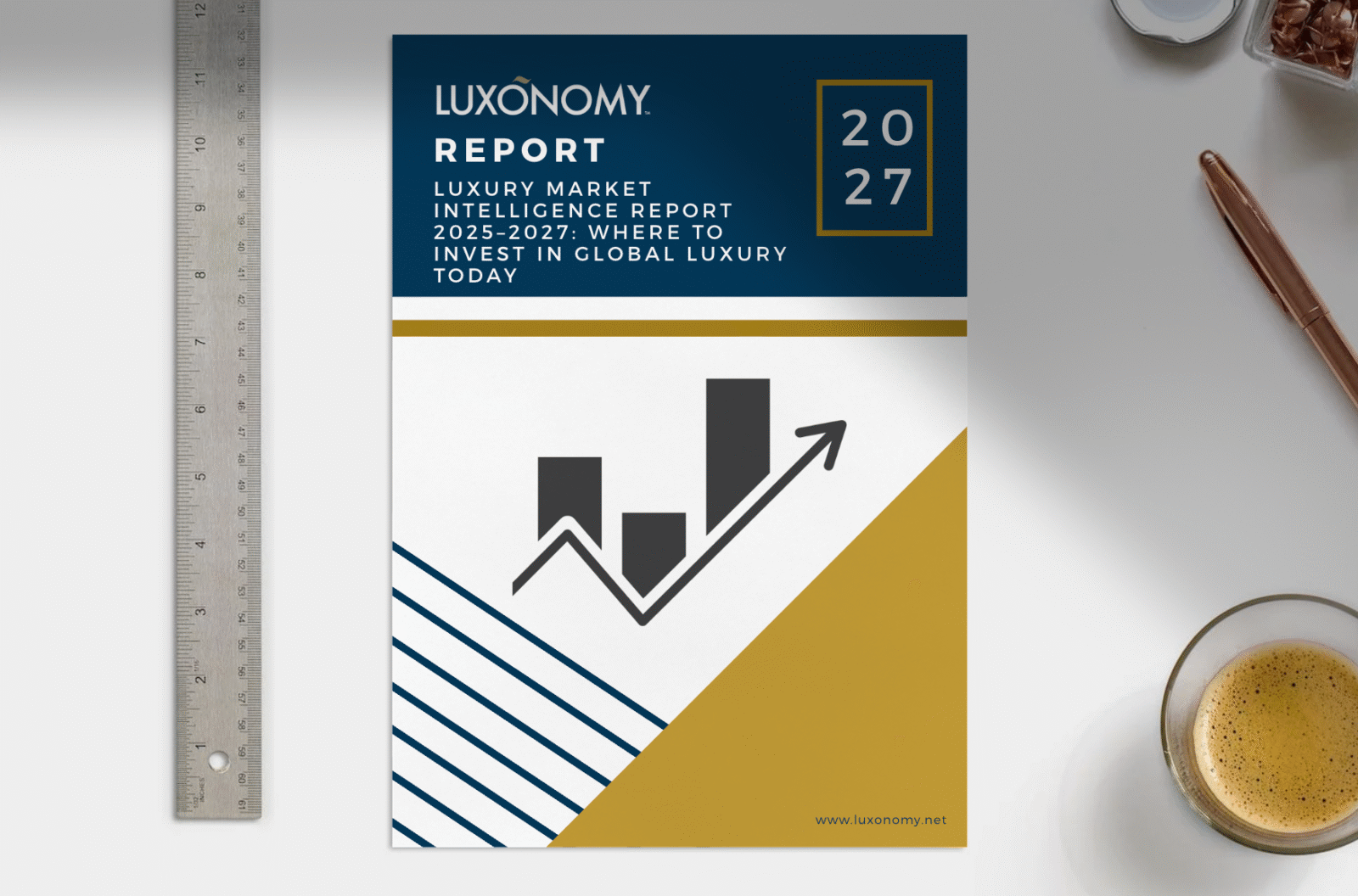Luxury Market Intelligence Report 2025–2027: Where to Invest in Global Luxury Today

The global luxury sector is in a transition phase following the strong post-pandemic recovery. Although overall growth has moderated to 1–3% per year expected until 2027, large luxury conglomerates continue to post record figures and consolidate their position. In 2023, LVMH (the world’s leading luxury company) posted record revenues of €86.2 billion and a net profit of €15.2 billion, illustrating the sector’s resilience in the face of macroeconomic challenges. Industry-average operating margins have exceeded pre-pandemic levels (13.4% compound net margin in 2022), supported by price increase and cost control strategies. Below is an analysis by key sectors—fashion, watch/jewelry, real estate, art, automotive, hospitality, and others—highlighting trends, financial developments, and investment signals from major luxury groups (LVMH, Kering, Richemont, etc.), with a global focus on the 2025–2027 horizon.
Contents of this Report
-
Introduction: Global Luxury in Transition (2025–2027)
-
Luxury Market Overview 2.1 Global Market Size and Forecast 2.2 Geographic Evolution: US, Asia, Europe, and Emerging Markets 2.3 Shifts in the Luxury Consumer
-
Luxury Fashion and Accessories 3.1 Key Trends 3.2 Main Groups and Financial Results 3.3 Investment Indicators and Opportunity Alerts
-
Luxury Watches and Jewelry 4.1 Sector Performance 4.2 Corporate Movements and Acquisitions 4.3 Key Indicators and Opportunity Alerts
-
Luxury Real Estate 5.1 Evolution of the Prime Real Estate Market 5.2 Branded Projects and Branded Residences 5.3 Geographical Opportunities and Investment indirect
-
Luxury Art and Collectibles 6.1 Current State of the Art Market 6.2 Connection with Luxury Conglomerates 6.3 Key Indicators and Emerging Opportunities
-
Luxury Automobiles 7.1 Transformations and Electrification 7.2 Financial Results and Brand Strategy 7.3 Investment Opportunities and New Business Models
-
Hospitality and Luxury Travel 8.1 Dynamics of High-End Tourism 8.2 Main Groups and Strategies 8.3 Indicators and Investment Trends
-
Other Emerging Luxury Sectors 9.1 Premium Beauty and Cosmetics 9.2 Wines, Spirits and Gourmet 9.3 Yachts, Jets and Exclusive Mobility 9.4 Technology and Well-being Luxury
-
Conclusions and Strategic Recommendations 10.1 Sectors and Regions with the Greatest Potential 10.2 Leading Groups and Key Decisions 10.3 Actionable Indicators for Investors
Global Luxury Outlook (2024–2027)
The total luxury market (goods + experiences) reached an estimated value of €1.48 trillion in 2024, remaining stable year-on-year after rapid expansion in 2021–2022. This market covers nine segments, from luxury cars, personal goods, and hospitality to fine wines, fine dining, high-end furniture, art, private jets, and luxury cruises. The top three (cars, personal goods, and hospitality) account for 80% of total spending. After the post-Covid boom, 2024 marked a slight contraction of -2% in personal luxury goods (the first decline in 15 years outside the Covid period), partly offset by the rise of experiences (+5%). Affluent consumers have returned to travel, dining, and wellness, prioritizing exclusive experiences over traditional products. However, global luxury spending remains well above pre-pandemic levels and is projected to return to a moderately positive path by 2025, with low to medium single-digit growth according to Bain. From a regional perspective, growth dynamics are shifting. The United States leads in growth prospects (4–6% annually through 2027), outperforming China (3–5%) and Europe (2–4%). Asia remains critical: China is anticipated to be the world’s largest luxury market by 2025, absorbing around 40% of global spending (vs. ~22% the Americas and ~17% Europe), although China’s recovery has been slower than expected in 2024. Emerging markets such as India, Southeast Asia, Africa, and Latin America will contribute a new contingent of over 50 million upper-middle-class luxury consumers by 2030, driving geographic opportunities. In fact, by 2025, India could lead the sector’s growth (estimated at +15–20%) thanks to the rise of its affluent class. Japan and the Middle East also stand out with robust demand, leveraging tourism and weak currencies.

Subscribe to continue reading
Become a paid subscriber to get access to the rest of this post and other exclusive content.
Share/Compártelo
- Click to share on LinkedIn (Opens in new window)
- Click to share on WhatsApp (Opens in new window)
- Click to share on Facebook (Opens in new window)
- Click to share on Twitter (Opens in new window)
- Click to share on Threads (Opens in new window)
- Click to email a link to a friend (Opens in new window)
- Click to print (Opens in new window)
- More













